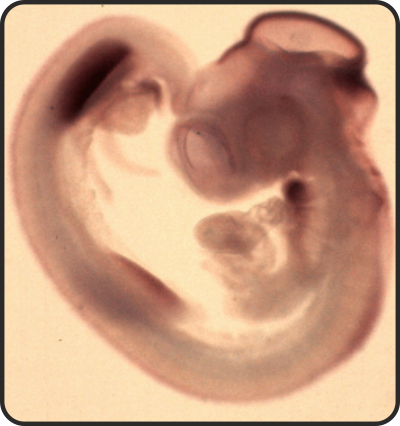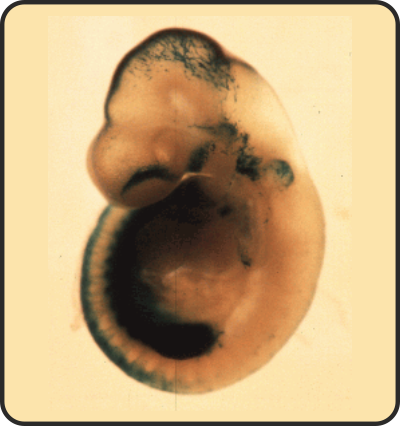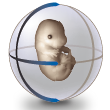The Edinburgh Mouse Atlas Project: School Tutorial - Overview
  |
Molecular biologists at the MRC Human Genetics Unit and around the world are attempting to unravel how genes control the development of the embryo. This is an interesting basic research problem and will provide key information for understanding congenital disorders and certain cancers. The mouse is the standard mammalian model for this work and for most things is very close to man! The mouse embryo is therefore used in experiments to chart where genes are active during embryo development. The pictures on the left are typical of the type of data being generated. They show as a dark or blue stain the parts of the mouse embryo in which a certain gene has been activated. What we learn from this is that each gene is active in it's own particular pattern and that these patterns are complex 3D regions which are hard to describe in words. A problem faced by researchers is the shear volume of information that is being generated in these experiments. This means that key links between experimental results may be difficult to find and leads to wasted time and effort. |
 |
To help solve this problem we are building a database which can be used to store the patterns of gene activity and allow researchers to ask questions about them - for example "Is there any gene which is active in the same pattern as gene A, but at one stage later in development? Questions like this need a graphical database - i.e. one that can store and compare pictures of where genes are active. Our idea is to have a 3D image like that on the right. Here, it is as if the embryo were embedded in a block: the user can cut (in the computer) any view that is needed and put experimental data directly in place. The coloured shapes are parts of anatomy that have been defined in this way. |
 |
As well as pictures, biologists also want to be able to use written descriptions of the parts of the embryo - i.e. to use anatomical names. For this reason we must link the anatomy description on the left which is all words to the image description on the right which is all spatial co-ordinates. |




